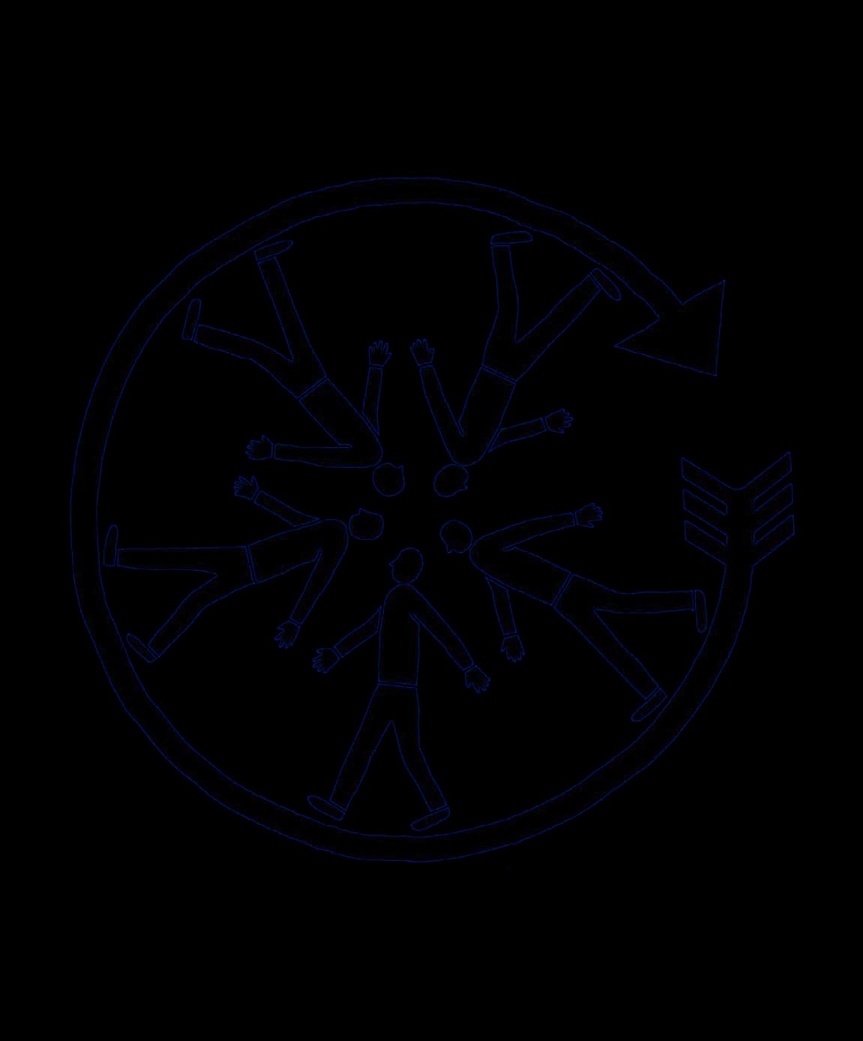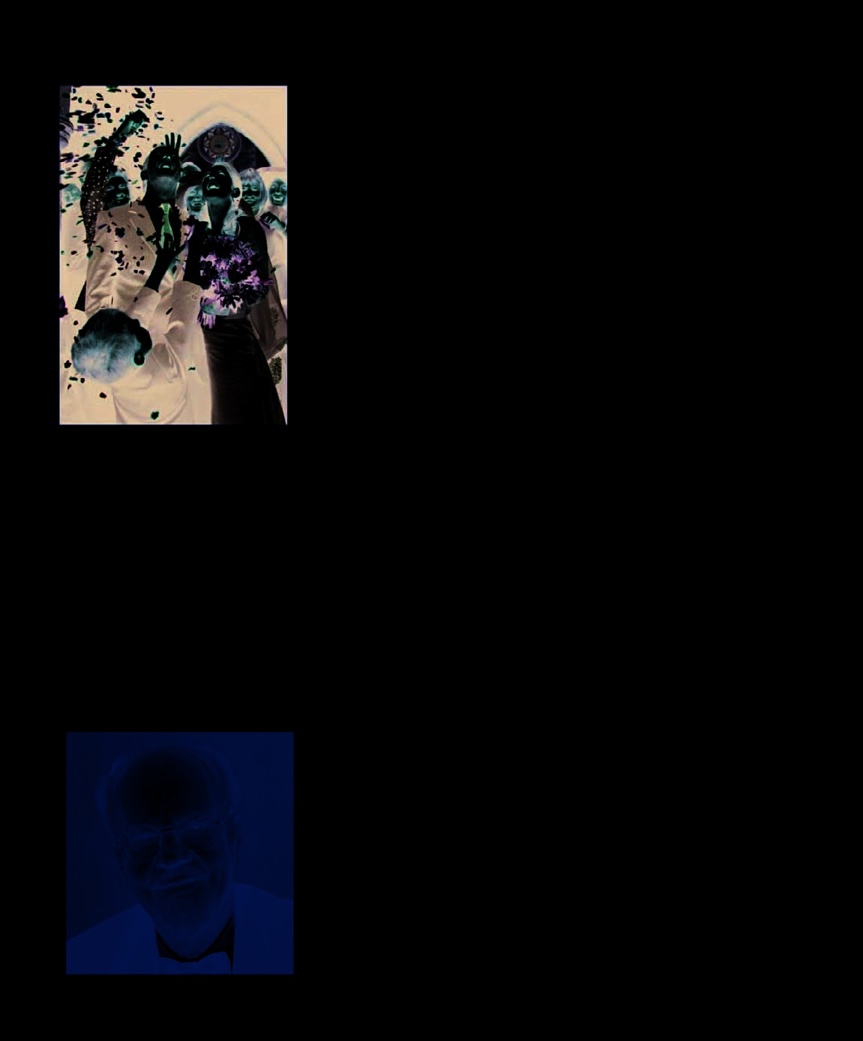The Psychology Book (59 page)
Read The Psychology Book Online
Authors: Unknown

an extended version of his filter
the confines of the laboratory. A key
from the evidence available at the
theory. Like its predecessor, this
figure in the founding of cognitive
time, and so susceptible to change
book became a classic textbook of
psychology, his research into
in the light of new evidence; this is
cognitive psychology.
attention laid the groundwork for a
how science progresses.
new field of enquiry that continues
The work of the APU centered
The cognitive approach
to yield rich results today. ■
around Broadbent’s research into
Broadbent’s books did not reach
attention, but this allowed for a
the general public, but were widely
constantly widening range of
read by scientists from other
applications. Broadbent worked
disciplines. His comparison of the
tirelessly to ensure that his work
workings of the human brain with
was practically useful, examining
electronic machines became more
the effects of noise, heat, and stress
and more relevant as interest in
His psychology was intended
on attention in work environments,
computing increased. His model
for society and its problems,
and he constantly reviewed his
of the various stages of human
not merely for the dwellers
ideas as he worked. In the process,
information processing—acquisition,
in ivory towers.
he gained government support for
storage, retrieval, and use—echoed
Fergus Craik and
his ideas, and the respect of many
the work on artificial intelligence
Alan Baddely
industries whose practices were
at that time.
improved by his work. This led to
Broadbent was instrumental in
yet more research into areas such
setting up a Joint Council Initiative
as differences of attention between
on Cognitive Science and Human-
individuals, and lapses of attention
Computer Interaction, which helped

TIME’S ARROW
IS BENT
I
E N
NDE T
L TU O A L
LVING (1927– ) OOP


188 ENDEL TULVING
IN CONTEXT
Episodic memory
is made up of events and
APPROACH
experiences that are stored in long-term memory.
Memory studies
BEFORE
1878
Hermann Ebbinghaus
conducts the first scientific
study of human memory.
Memories of our
It is distinct from
semantic
1927
Bluma Zeigarnik
experiences are
associated
memory
, which is our
with particular times and
describes how interrupted
long-term memory store for
places
and can be triggered
tasks are better remembered
facts and knowledge.
by these cues.
than uninterrupted ones.
1960s
Jerome Bruner stresses
the importance of organization
and categorization in the
learning process.
Associated
sensory cues
such as a particular
AFTER
song or scent can also help us recall seemingly
1979
Elizabeth Loftus looks at
complete memories of past events.
distortions of memory in her
book
Eyewitness Testimony.
1981
Gordon H. Bower makes
the link between events and
Only humans can
“travel back in time”
to
emotions in memory.
reflect on their experiences in this way…
2001
Daniel Schacter
publishes
The Seven Sins of
Memory
:
How the Mind
Forgets and Remembers.
…as if time’s arrow is bent into a loop.
M
emory was one of the studies, notably by Bluma Zeigarnik area of study. Forced to abandon first fields of study for
and Frederic Bartlett in the 1920s
the study of visual perception due
psychologists in the
and 30s, memory was largely ignored
to a lack of facilities, Tulving turned
19th century, as it was closely
as a topic until the “cognitive
his attention to memory. The
connected with the concept of
revolution” took place following
funding deficit also shaped his
consciousness, which had formed
World War II. Cognitive psychologists
approach to the subject, designing
the bridge between philosophy and
began to explore the idea of the
experiments that used no more
psychology. Hermann Ebbinghaus
brain as an information processor,
than a pen, some paper, and a
in particular devoted much of his
and this provided a model for the
supply of index cards.
research to the scientific study of
storage of memory: it was seen as
memory and learning, but the next
a process, whereby some items
The free-recall method
generation of psychologists turned
passed from short-term or working
Learning about the subject as he
their attention to a behaviorist
memory into long-term memory.
went along, Tulving worked in a
study of learning, and “conditioning”
By the time Endel Tulving
rather unorthodox way, which
replaced memory as the focus of
finished his doctorate in 1957,
occasionally earned him criticism
research. Apart from a few isolated
memory was once more a central
from his peers, and was to make

COGNITIVE PSYCHOLOGY 189
See also:
Hermann Ebbinghaus 48–49 ■ Bluma Zeigarnik 162 ■ George Armitage Miller 168–73 ■ Gordon H. Bower 194–95 ■ Elizabeth Loftus 202–07 ■ Daniel Schacter 208–09 ■ Roger Brown 237 ■ Frederic Bartlett 335
publishing his results difficult. His
the better they organize the
In the course of his research,
maverick instincts did, however,
information, the better they are
Tulving was struck by the fact
lead to some truly innovative
able to remember it. His subjects
that there seemed to be different
research. One hurriedly designed,
were also able to recall a word
kinds of memory. The distinction
ad hoc
demonstration to a class of
when given a cue in the form of
between long-term memory and
students in the early 1960s was to
the category (such as “animals”)
short-term memory had already
provide him with the model for
in which they had mentally filed
been established, but Tulving felt
many later experiments. He read
that word. Tulving concluded that
there was more than one kind of
out a random list of 20 everyday
although all the words memorized
long-term memory. He saw a
words to the students, and then
from the list were actually available
difference between memories
asked them to write down as many
for remembering, the ones that
that are knowledge-based (facts
as they could recall, in any order.
were organized by subject were
and data), and those that are
As he expected, most of them
more readily accessible to memory,
experience-based (events and
managed to remember around
especially when the appropriate
conversations). He proposed a
half of the list. He then asked them
cue was given.
division of long-term memory into
about the words that they had not
two distinct types: semantic
remembered, giving hints such as
Memory types
memory, the store of facts; and
“Wasn’t there a color on the list?,”
Where previous psychologists
episodic memory, the repository
after which the student could often
had concentrated on the process
of our personal history and events.
provide the correct answer.
of storing information, and the
Tulving’s experiments had
Tulving developed a series of
failings of that process, Tulving
demonstrated that organization of
experiments on this “free recall”
made a distinction between two
semantic information, such as lists
method, during which he noticed
different processes—storage and
of words, helps efficient recollection,
that people tend to group words
retrieval of information—and
and the same appeared to be true
together into meaningful categories;
showed how the two were linked.
of episodic memory. But where ❯❯
ANIMALS
FOOD
TRANSPORTATION
TOOLS
In Tulving’s free recall experiments,
people were asked
to remember as many words as possible from a random list.
“Forgotten” words were often recalled using category cues.
They were stored in memory but temporarily inaccessible.
